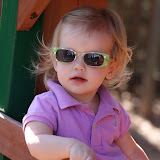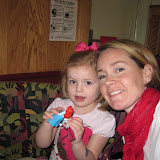
I’ve been asked to contribute an editorial about my photography business to a new website for women and technology – http://www.digitalfrosting.com/ . The site is being launched at the end of the year, and my article and the topic of digital photography are set to be one of the first topics of interest on the site.
When I got the request from the founders of the site – who found me through http://www.flickr.com/ – I was so flattered. I still am. To think that someone out there is interested in reading about me, my tips, and my business is enough to make my head swell.
I guess I should go swelling myself up just yet . . . we’ll see how the article turns out on the site. Of course, I’ll put a link here on the Blog as soon as I know the site is launched and my article is up.
Until then – I thought I’d share just a bit of what I’m writing. I’m sharing my “general tips for digital photography” with you – happy photo-taking!
Their Question: What tips do you have for someone just getting started taking digital photos?
When I got the request from the founders of the site – who found me through http://www.flickr.com/ – I was so flattered. I still am. To think that someone out there is interested in reading about me, my tips, and my business is enough to make my head swell.
I guess I should go swelling myself up just yet . . . we’ll see how the article turns out on the site. Of course, I’ll put a link here on the Blog as soon as I know the site is launched and my article is up.
Until then – I thought I’d share just a bit of what I’m writing. I’m sharing my “general tips for digital photography” with you – happy photo-taking!
Their Question: What tips do you have for someone just getting started taking digital photos?
My number one tip is: Take a LOT of pictures. The only way to get better at digital photography is to take more pictures. Take advantage of your technology and shoot a LOT! Try different angles, different lighting, flash or no flash, and USE the different settings on your camera. Don’t be afraid to take a TON of pictures. With each click of the shutter, you get a little better and you’ll learn more. And don’t get frustrated if you aren’t great right away – you really, truly will get better with practice!
Another tip: Don’t get hung up on the megapixels. Granted, when selecting a camera you want to make certain you have decent megapixels . . . but anything over 6 is going to do the trick. Six plus megapixels will provide you with quality images that you can blow up to 11x14. For the average person, this is just want they need. There is much more to a camera that just megapixels – do don’t feel that you have to get 10 or more to guarantee quality. Those 8 meg cameras out there are great, too.
Download your pictures often – and make a point to print them! It may seem like “one more step” with digital photography, but really it’s not. You can upload your images to so many local printing facilities (Walgreens, CVS, WalMart, Target) . . . and the images are ready for pick-up when you arrive. Printing is easy – don’t be afraid and DON’T stop doing it with the switch to digital.
If you can, avoid using the “red eye reducer” on your camera. It’s a good feature, but it dramatically slows down your ability to shoot pictures quickly. Most editing software (even what came with your camera or what is already installed on your computer) has a pretty good method for getting it out in the post-processing process.
Their Question: What tips do you have for someone who wants to take professional-quality digital photos?
Invest in an SLR. SLR (or single-lens reflex) cameras are best for anything of professional quality. You don’t have to invest in the highest-end product to get good pictures, but you do have to buck up and get some type of SLR. The delay you experience with a point-and-shoot diappears, and you are left with really fantastic images. You have absolute creative control with an SLR – from aperture to shutter speed to ISO, you control it all. An SLR is a must for any type of professional quality digital picture.
Lighting is KEY. Use natural light – NO FLASH. Sometimes there are situations where flash is unavoidable – and in those cases, you have no choice. But, if you truly want to take a professional-style portrait of someone, you need nothing but natural light. If you don’t have enough light (ie, your flash keeps popping up), recompose or move your subject until you do.
Another lighting tip – light from the side. People are naturally lit from the side or from above . . . rarely are we lit from the front, which is what happens when you point a flash directly at your subject. Think about it and look around . . . most of what you see has light falling on it from the side or from above. To create professional-quality portraits, always find a place where your subject is lit in natural way . . . which is most often from the side. Place them next to a window or an open door, which will help you naturally light from the side.
Fill the Frame – the entire viewfinder – with your subject. If you can’t fill the frame from where you are, get closer to the subject until you can. Also – really LOOK at the entire frame before you shoot. Scan for distractions in the background – trash, corners of objects, anything that takes away from the subject.
When taking group pictures, get your subjects as close together as you can. Avoid any negative space between the people in the photo. The closer they are to one another, the better. For parents and kids, having the parents sit or crouch is a great way to achieve closeness. Also, if you can, like up the eyes of your subjects. . . for close ups of two or three family members, ask them to put their faces right next to each other, with their eyes lining up as best they can. This creates a great portrait that is pleasing to the eye.
Their Question: Do you have any general tips for capturing good digital photos of babies and children?
Always note the lighting situation and AVOID the flash if at all possible. Try to capture the kids in natural lighting situations, like outdoors or near a bright window.
Get down on their level. Pictures taken while you are crouching or lying on the ground are awesome. Even at a soccer game, bend down to the level of the kids to get the best shot.
Click away – take a lot of pictures. If your camera has a “rapid fire” type of mode (found usually on SLRs) – use it. You’ll take several pictures in a row that way, and you are likely to get at least one you love.
Use your “action” mode or the TV on your camera . . . babies and kids are always on the move, and these settings are key to helping you stop the action.
Natural looks with babies are really beautiful. Don’t worry too much if they won’t smile all the time . . . their simple natural expressions are priceless as well.
Natural smiles are hard with older kids, so don’t be afraid to be silly with them. Ask them to tell you a joke – or tell them a joke. Tell them NOT to smile. Let them make a goofy face, then capture that post-goofy-face smile.
Take your time. Rushed pictures of babies and kids are no fun at all. I still say
shoot away quickly – but don’t keep on until the kid has totally lost interest and is
fighting the photo shoot. If the little one is worn out from picture-taking, give them a break or switch your focus to let them do their own thing while you shoot away.
Their Question: Do you have any general tips for capturing good digital photos of babies and children?
Always note the lighting situation and AVOID the flash if at all possible. Try to capture the kids in natural lighting situations, like outdoors or near a bright window.
Get down on their level. Pictures taken while you are crouching or lying on the ground are awesome. Even at a soccer game, bend down to the level of the kids to get the best shot.
Click away – take a lot of pictures. If your camera has a “rapid fire” type of mode (found usually on SLRs) – use it. You’ll take several pictures in a row that way, and you are likely to get at least one you love.
Use your “action” mode or the TV on your camera . . . babies and kids are always on the move, and these settings are key to helping you stop the action.
Natural looks with babies are really beautiful. Don’t worry too much if they won’t smile all the time . . . their simple natural expressions are priceless as well.
Natural smiles are hard with older kids, so don’t be afraid to be silly with them. Ask them to tell you a joke – or tell them a joke. Tell them NOT to smile. Let them make a goofy face, then capture that post-goofy-face smile.
Take your time. Rushed pictures of babies and kids are no fun at all. I still say
shoot away quickly – but don’t keep on until the kid has totally lost interest and is
fighting the photo shoot. If the little one is worn out from picture-taking, give them a break or switch your focus to let them do their own thing while you shoot away.







.jpg)
No comments:
Post a Comment